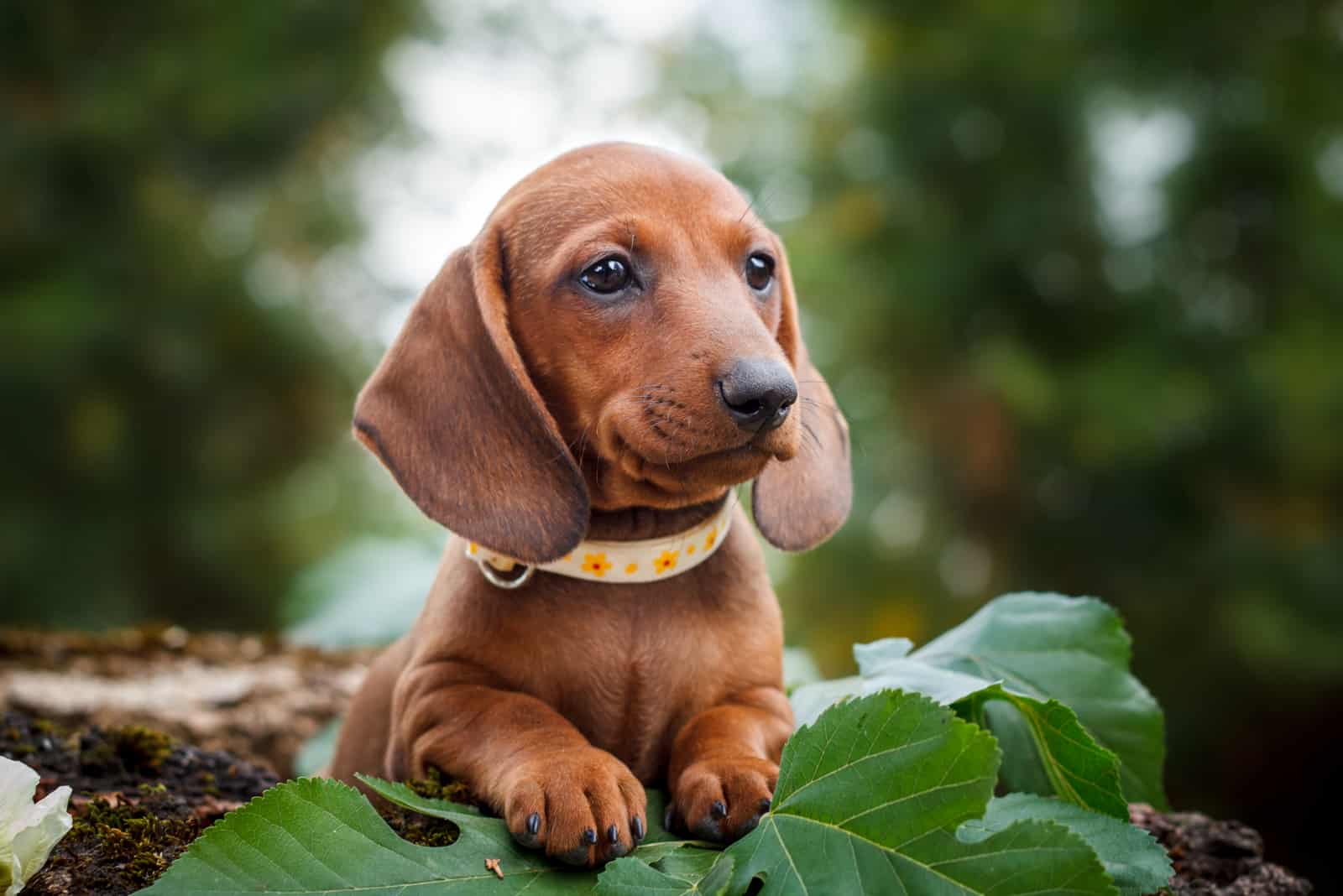The Dachshund breed is truly a wonderful one.
With their quirky temperament and many different colors they come in, Dachshunds make one of the best pets.
All Doxies are sweet-tempered no matter their coat color. Well, speaking of Dachshund colors, what’s the deal with those? Why are there so many coat color variations with this breed?
Indeed, Dachshunds come in many color combinations, all thanks to their genetics. I will address this later. What you need to know is that there are Dachshunds with approved and non-approved colors.
The American Kennel Club won’t recognize some of them as a part of the breed standard. Usually, this is because they are a work of messy gene play, which causes further issues with the dog’s health.
Continue reading to find out how many Dachshund colors there are. You will also learn how to distinguish one color from another.
By the end of this short lesson, you will learn all about Doxie colors, and you will be able to pick the right one for you.
A Word On The Dachshund Dog Breed
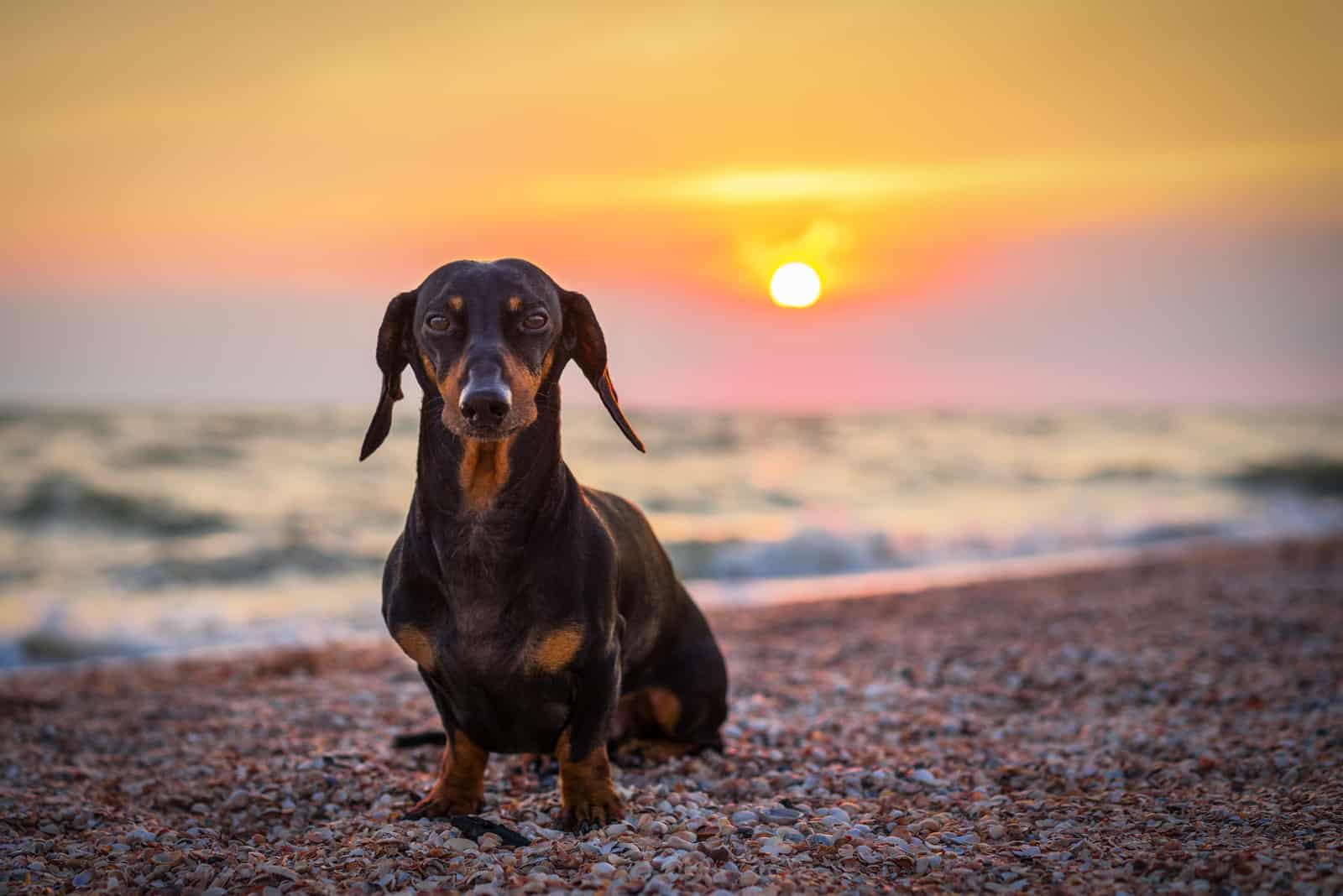
They call them sausage dogs or weiner dogs, but there’s so much to this dog breed than just their long bodies.
Meet the Dachshund; one of the most unique dog breeds in the world. Their body shape is truly unusual, with their stubby, short legs, and their size that’s longer than it is taller.
According to their breed standard, Dachshunds in standard size weigh approximately 15 to 30 pounds. Miniature Dachshunds are much lighter, and weigh 11 pounds or less.
Dachshunds have a wonderful character despite what many people believe. No, they’re not aggressive by default, and they won’t attack strangers just because. This bad reputation comes from the fact that Doxies are very protective.
After all, they were bred to serve humans, hunt badgers, and be loyal companions on hunting trips as well as at home. Doxies are feisty, energetic, and playful. You only need to find a way to control them.
This dog breed comes in two sizes: the standard Dachshund and the mini Dachshund. Both sizes are a good fit for apartment living. However, you need to watch out for stairs and elevated surfaces.
Because of their short legs, Doxies are prone to joint injuries and mobility problems. You don’t need stairs to make their condition worse.
Coat Type: What Kind Of A Coat Does A Dachshund Fashion?
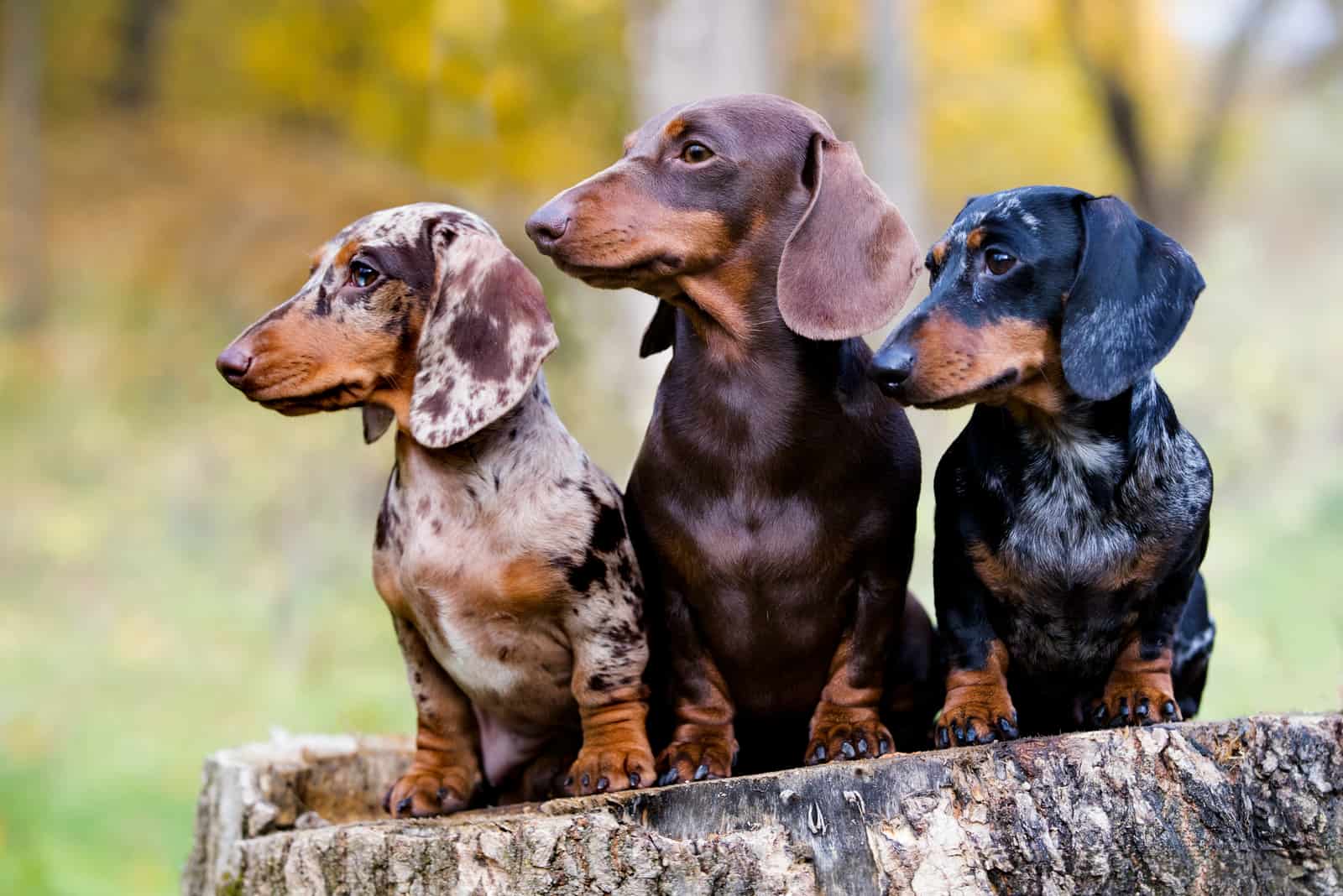
A Dachshunds’ coat comes in three variations:
– the long-haired Dachshund
– the smooth-haired Dachshund
– the wire-haired Dachshund
Long-haired Dachshunds have silky long hair all over their body. It’s especially noticeable on their legs and ears. The hair is straight; never curly.
This coat type occurs with the following colors: black, red, Isabella, chocolate and tan, black and tan, as well as with dapple and piebald patterns.
Smooth-haired Dachshunds are also short-haired Dachshunds. They’re less prone to shedding than the other coat types. This coat type occurs with red, blue, brindle, Isabella, English cream, chocolate and tan, and black and tan.
Wire-haired Dachshunds have a coat that’s either curly or coarse to the touch. Their coat makes them appear very similar to Terriers or Schnauzers. Wiry Doxies have coarse hair around their beard and eyebrows. But, soft, wire-haired Doxies exist, too.
Another variation of the wire coat is pin-wire. This means the hair is shorter around the beard and eyebrows. Pin-wired Dachshunds are a result of mixing short-haired and wire-haired Dachshunds.
The wire-haired Doxie can come in red, brindle, black and tan, chocolate and tan, etc.
What Are the AKC-approved Dachshund Colors?
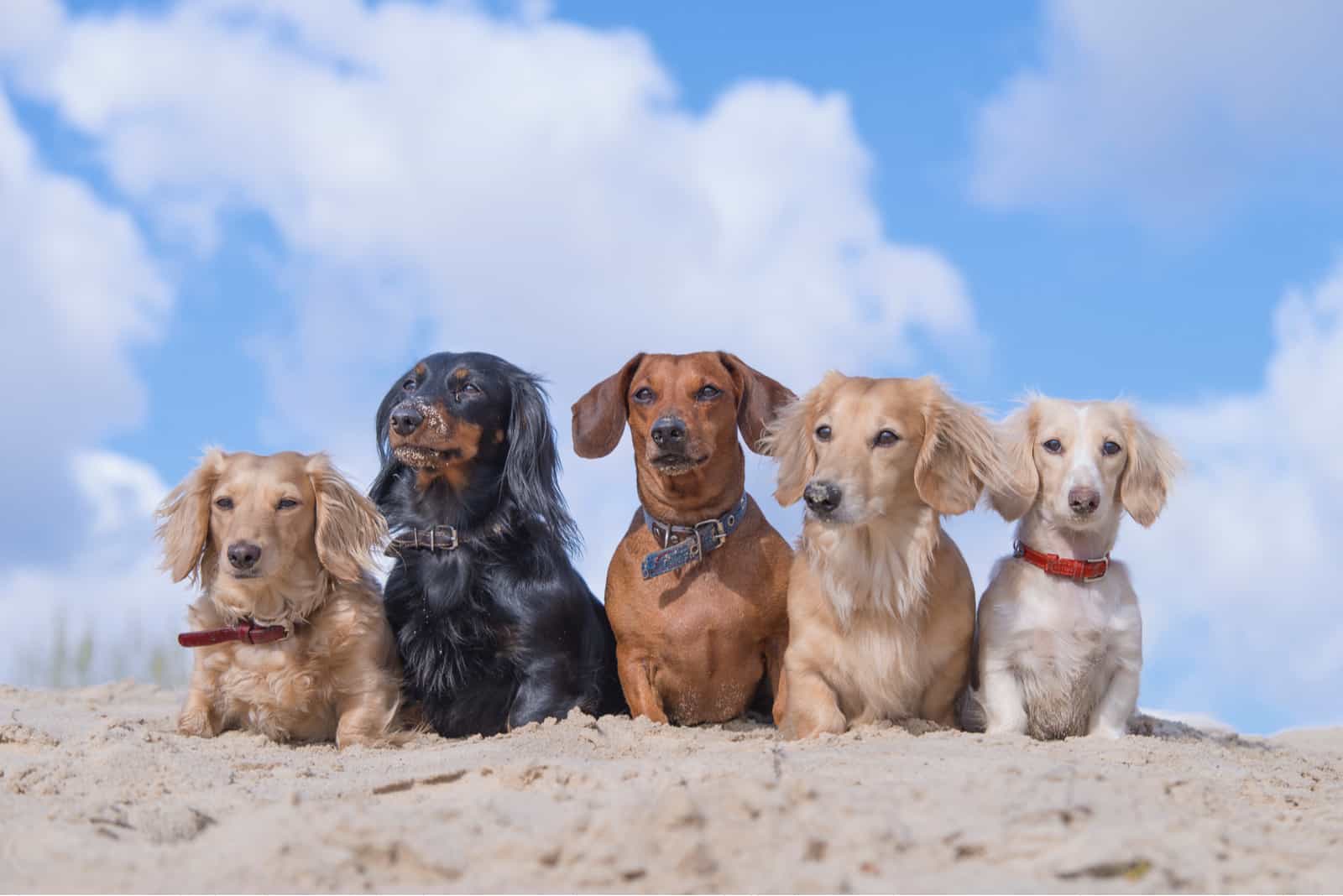
The American Kennel Club (AKC) will approve only the following coat colors. Any other color will be considered a fault, and won’t be accepted in conformation shows.
Standard colors are also referred to as base coat colors, and they are:
– red
– cream
– black and tan
– black and cream
– Isabella or fawn
– blue and tan
– chocolate and tan
– wild boar and tan
Which Coat Colors Are Non-Standard?
The official kennel clubs are strict when it comes to certain coat colors. They will not allow some Dachshunds to compete no matter how sweet they look. It’s the coat color that doesn’t allow them to compete.
The most undesirable or non-standard colors with Dachshunds are black, chocolate, Isabella or fawn, and dapple pattern.
Cream Dachshund

One of the most common Dachshund coat colors, and one of the prettiest of them all, is the cream Dachshund.
Even though Dachshunds have a feisty character, the look of a cream Doxie is pretty soft, kind, and calming, as if it tones down their strong personality.
Dachshunds in cream color are graceful dogs. Their coat color ranges from the deepest shades of golden cream to light cream that borders with white. So, don’t get them confused with white Dachshunds as there is no such thing.
Because of this shade diversity, we can distinguish two different cream Dachshunds: clear and shaded.
The Clear Dachshund presents a dog that’s a product of the Chinchilla dilution gene. This means that there is not a single black hair or marking on this dog.
Shaded Dachshunds are usually cream English Dachshunds. Their EE genes are dominant, which results in black shadings on the dog’s body, i.e., its ears. Mostly, these markings fade over time.
Red Dachshund Coat Color
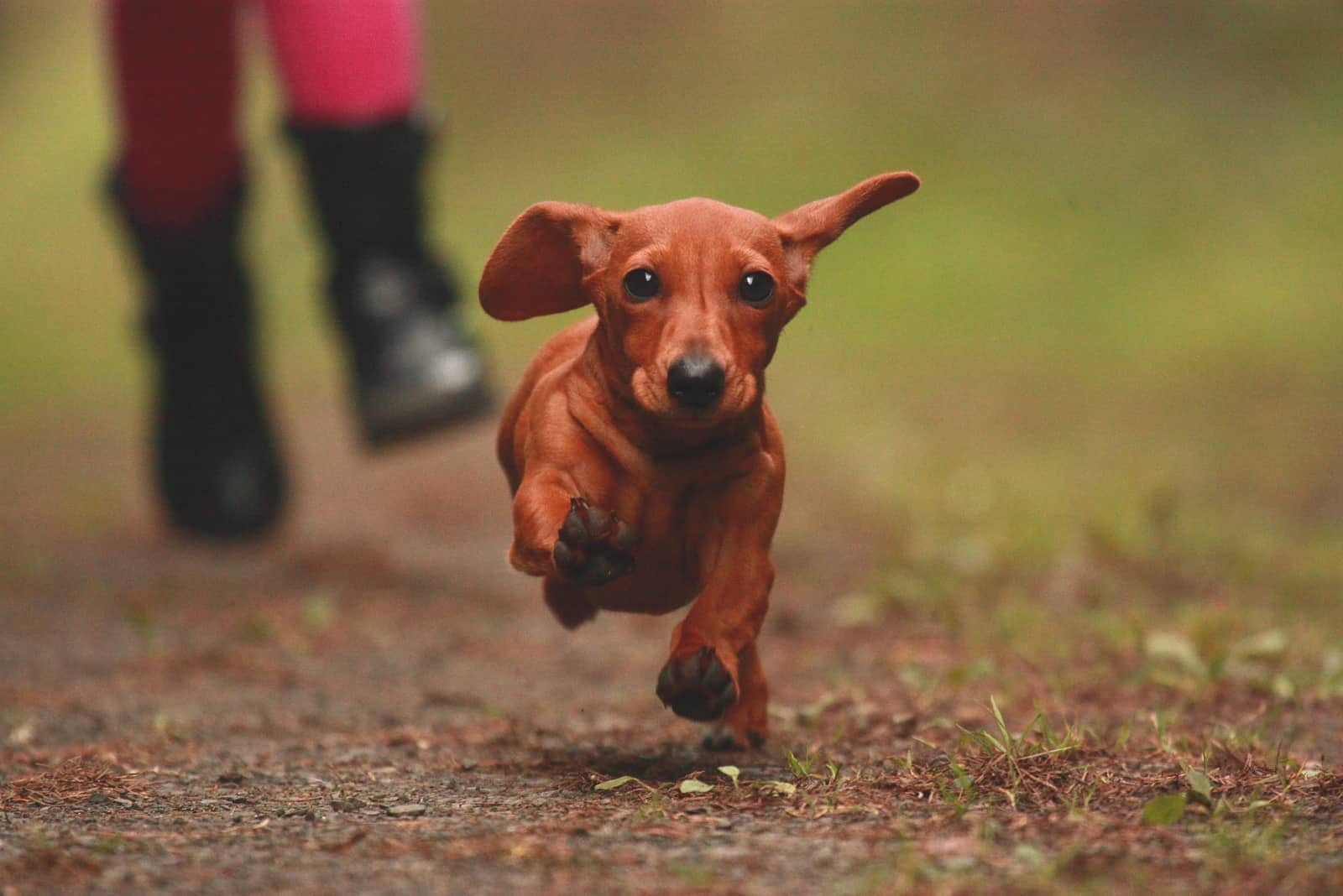
Another quite common coat color with Dachshunds is red.
This is actually a shade of rusty brown, with black accents on the dog’s nails and nose. Red Doxies are common because it takes just one set of dominant red genses to get a red puppy.
Like creams, red Doxies can come in two types: solid red and shaded red.
There’s not much to say about solid reds. They’re simply red dogs without any black or white markings on their body.
Shaded reds do have black markings. They’re mostly focused on the dog’s back, tail, as well as ears. Also, they have a black nose, nails, and black eye rims.
I suggest you look carefully and learn how to distinguish shaded reds from sable Dachshunds.
Chocolate Dachshund Coat Color
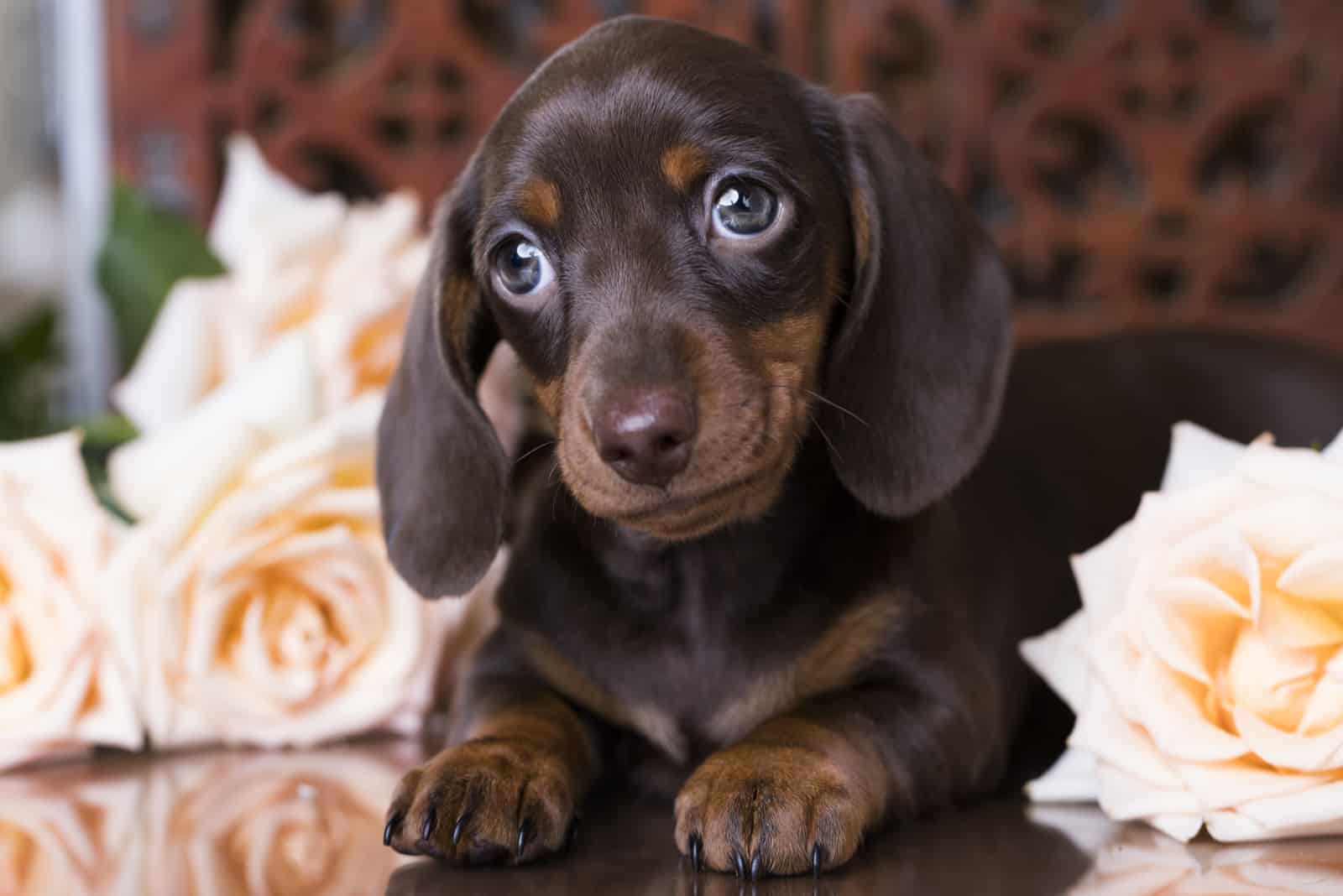
Chocolate Dachshunds are sadly not an accepted coat color by the AKC. But, if you don’t care about the rules and don’t plan on competing in dog shows, you might as well get a Doxie in chocolate color.
These pups come without any points in cream or tan. And, let me tell you something: they’re quite hard to find.
Fawn Or Isabella Dachshund
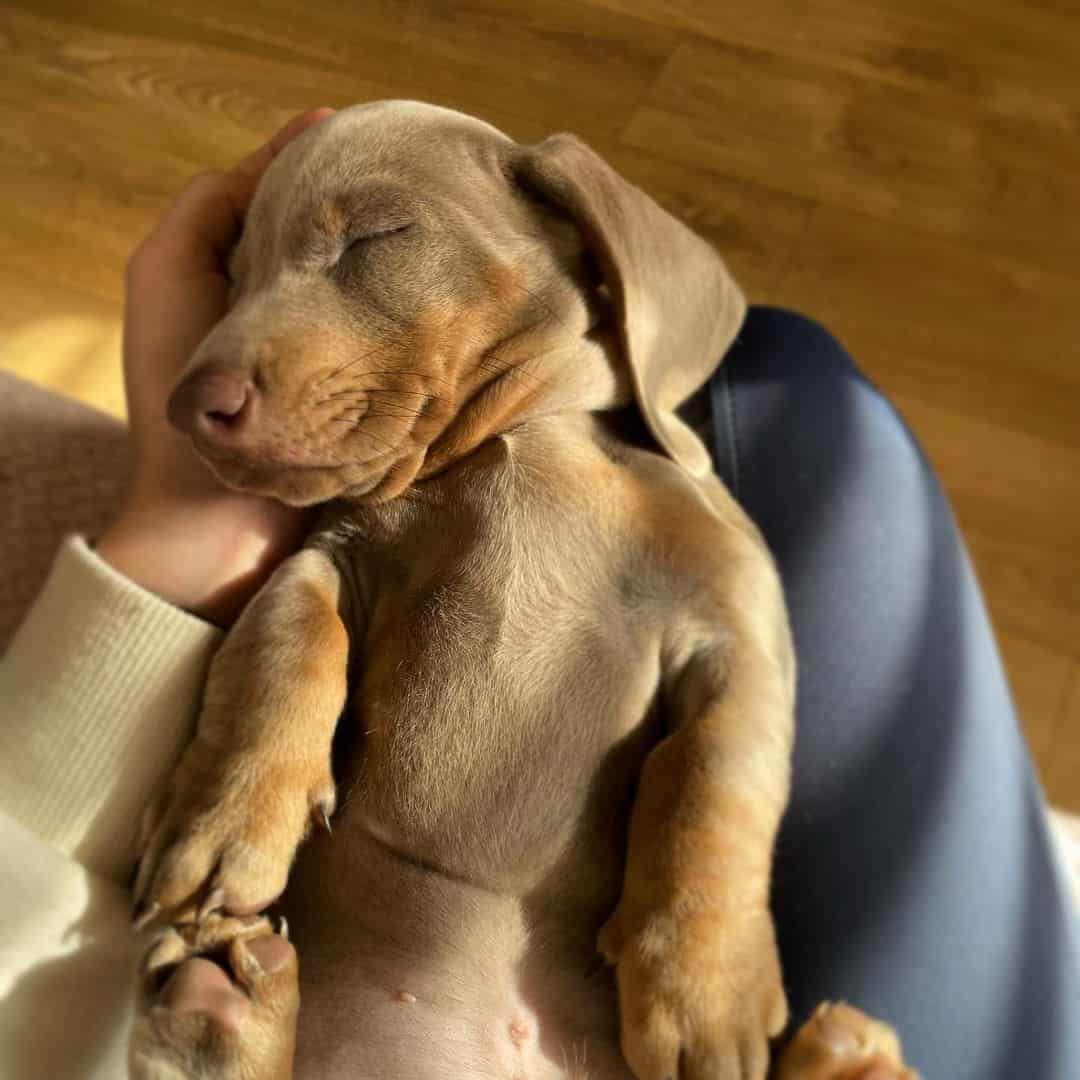
Photo from: @ottotheminisausagedog
We have pure, rich chocolate Dachshunds, and we have faded chocolate Doxies.
Meet the Isabella (or the fawn Dachshund)! Some also call them lilac Dachshunds! This pup can come in a variety of chocolate shades that can appear in the same litter. Also, Isabella is not limited to only one coat type; it can appear in all of them.
Wild Boar Coat Color
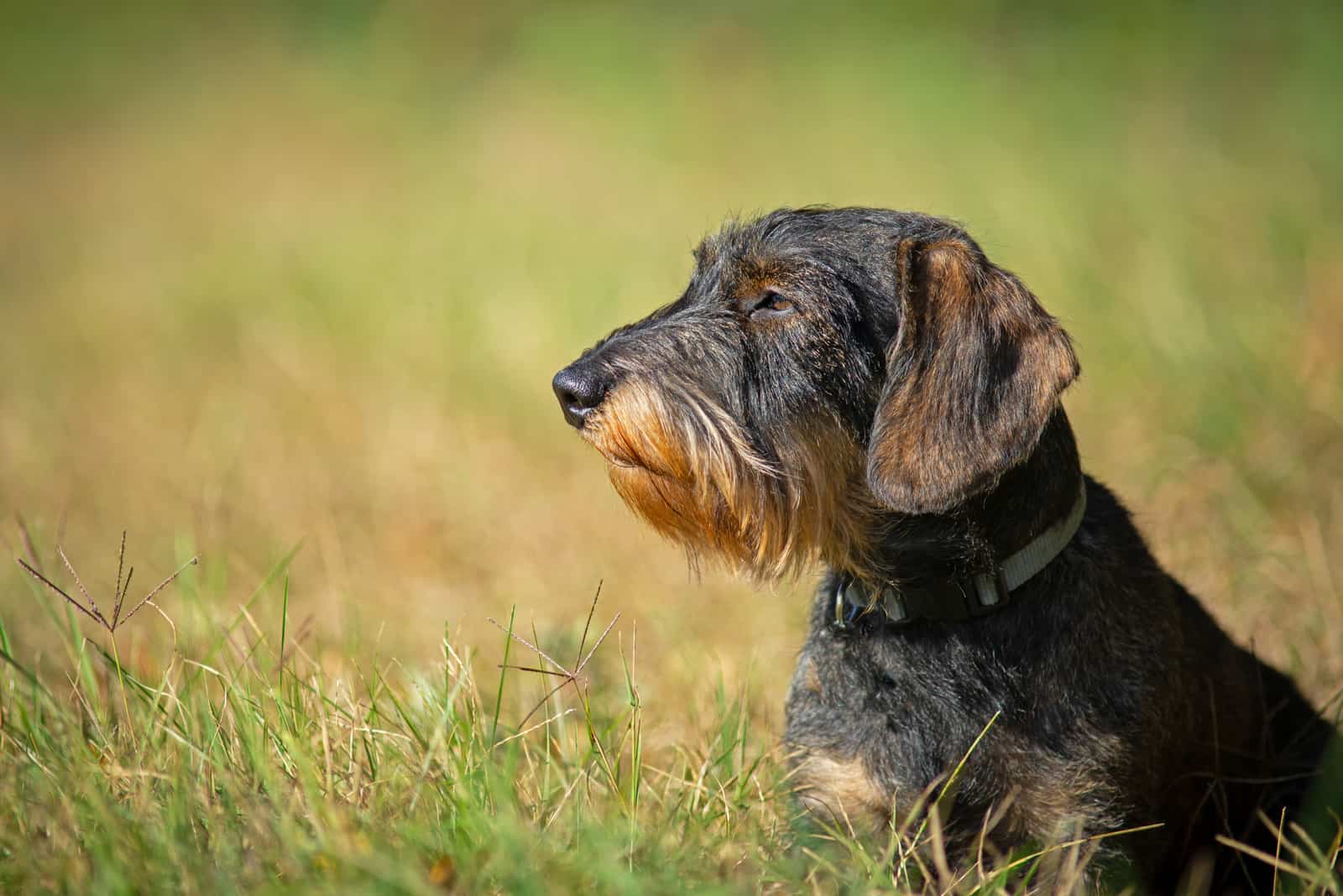
Now, here’s a coat color you don’t see every day. Even its name is unusual.
This coat color is named wild boar since it reminds you of wild boars. This shade shouldn’t be confused with black and tan, as it may appear as such. When you look closely, you’ll see that wild boar Dachshunds have golden highlights all over their body.
A curiosity about this coat color is that it appears only with calm coat types, smooth and wire types, to be precise.
Black Dachshund Coat Color
Another non-standard Dachshund color is black.
Even though many dog breeds have black as the dominant color, that’s not the case with Dachshunds. They’re even very hard to find.
If you come across a black Doxie puppy, you better know it’s a result of unethical breeding practices.
What’s problematic with pure black Dachshunds is that their signature tan points are minimized because of the tricky work of recessive genes.
Black And Tan Dachshund
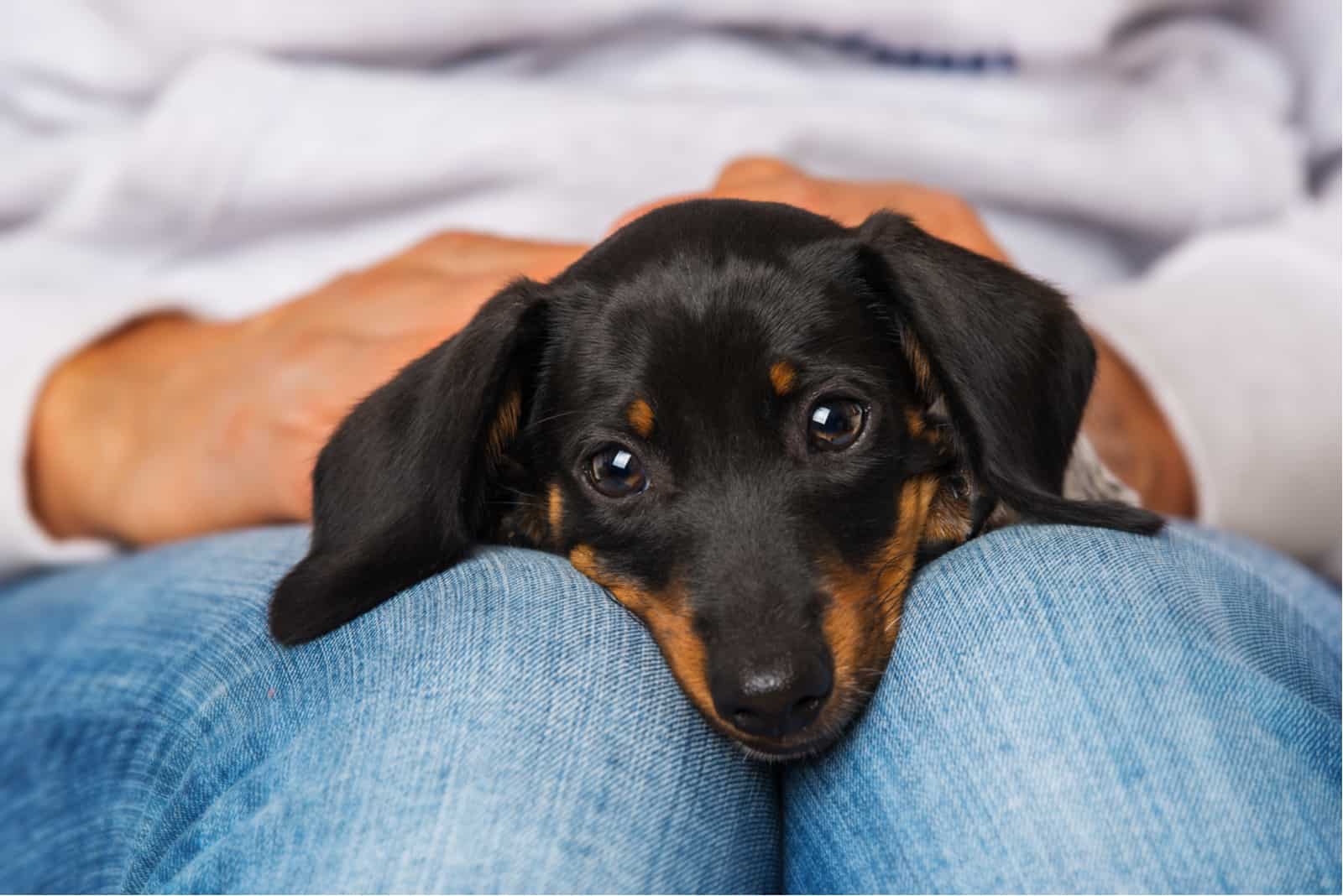
One of the most popular coat colors with Dachshunds is black and tan.
You can recognize these Doxies by the signature tan markings on their muzzle, tail, feet, chest, and above their eyes. But, be careful and don’t mix them with black and cream Doxies.
If you want a black and tan Dachshund puppy, make sure you find two black and tans to breed. Most certainly, they will produce a litter of puppies in the same coat color as their parents.
Black And Cream Dachshund
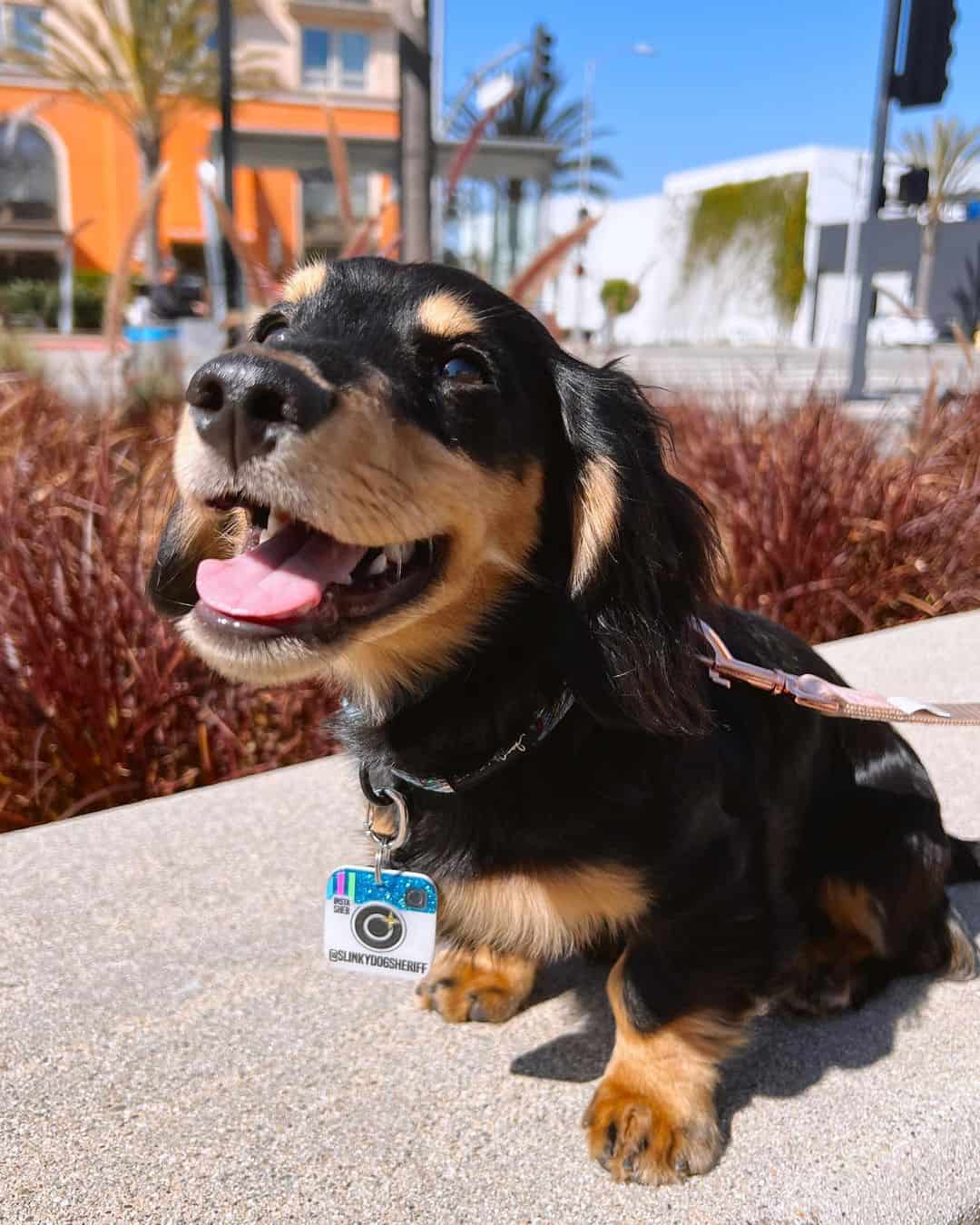
Photo from: @slinkydogsheriff
Black and cream Dachshunds are a combination of two contrasting colors. In fact, black is the darkest shade, and cream is the lightest shade found with Doxies.
You will recognize these pups because they have signature markings on their muzzle, feet, under their tail, on their chest, and above their eyes. Also, their nose, nails, and eyes are always black.
Wheaten Dachshund
Wheaten Dachshunds are colored just like wheat. Yes, wheat… the grain! They come in various shades of this light color.
Wheaten Dachshunds are very rare. They used to come only as wire-haired Doxies. However, many years of inbreeding have introduced this color to other coat types, such as long-haired or smooth-haired.
Blue And Tan Dachshund
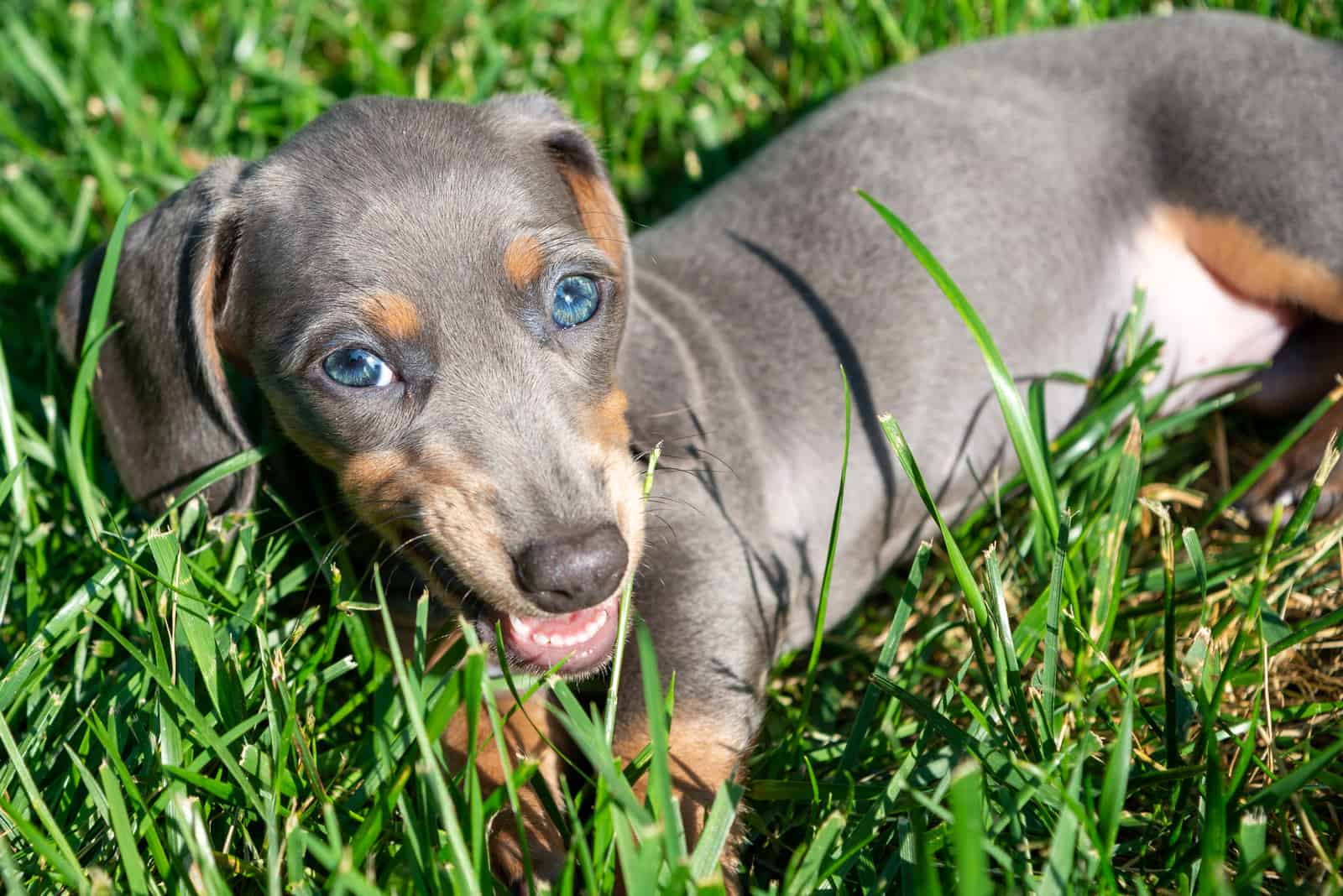
They may appear to be black, but they’re really blue and tan. Well, actually, blue is more of a dark gray, and I see why people often mistake them for black and tans.
Blue and tan Doxies are very rare, but that doesn’t deny the fact that they’re stunning creatures.
Blue And Cream Dachshund
Just like blue and tan, blue and cream Dachshunds look like black and creams.
Their base coat is the same shade of grayish blue. Some might say it’s a gunmetal shade of blue. It’s all over their body, except for their chest, feet, tail, muzzle, and above the eyes where they have cream markings.
Blue and cream Doxies are also wonderful and very eye-catching.
Chocolate And Tan Dachshund
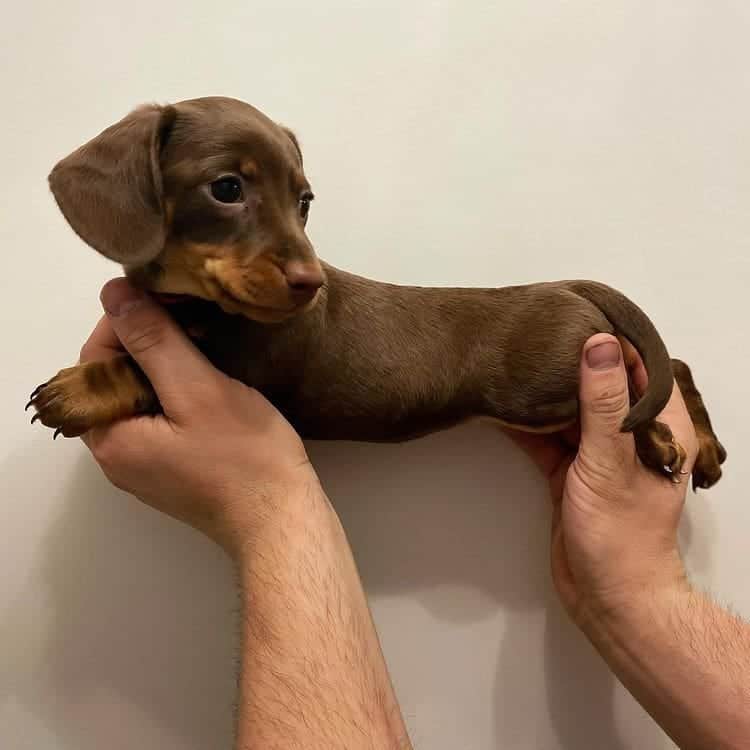
Photo from: @dachshundcute_
Oh, I could eat a chocolate and tan Doxie! They’re so adorable!
These pups have absolutely no black tint on their body. Instead, their nails, eyes, and nose are in a lovely shade of brown, ranging from the deepest to the lightest brown.
I like to say they’re chocolate and vanilla Doxies.
Chocolate And Cream Dachshund
Well, the same goes for the yummy chocolate and cream Doxie.
These pups have a deep chocolate base coat color on their forehead, back, tail, and ears.
Cream markings usually range from golden cream to off-white.
Isabella And Tan Coat Color
It’s hard to tell which Doxie is Isabella and tan, and which is only Isabella. You see, their markings are quite similar, and the tan shade is very much like the fawn coloring.
Isabella And Cream Coat Color
They might look like Weimaraners, but they’re actually Isabella and cream Dachshunds.
These sausage dogs have no chocolate pigment on their body. Their cream markings go from golden to off-white.
Brindle Coat Pattern
The brindle pattern is a unique-looking one, but it doesn’t only occur with Dachshunds. This is a common pattern in many dog breeds.
With brindle Doxies, the base color (or the self color) is usually tan or red, covered in striping. People also call these tiger stripes. They come in blue, gray, liver, black, and fawn.
Dapple Coat Pattern
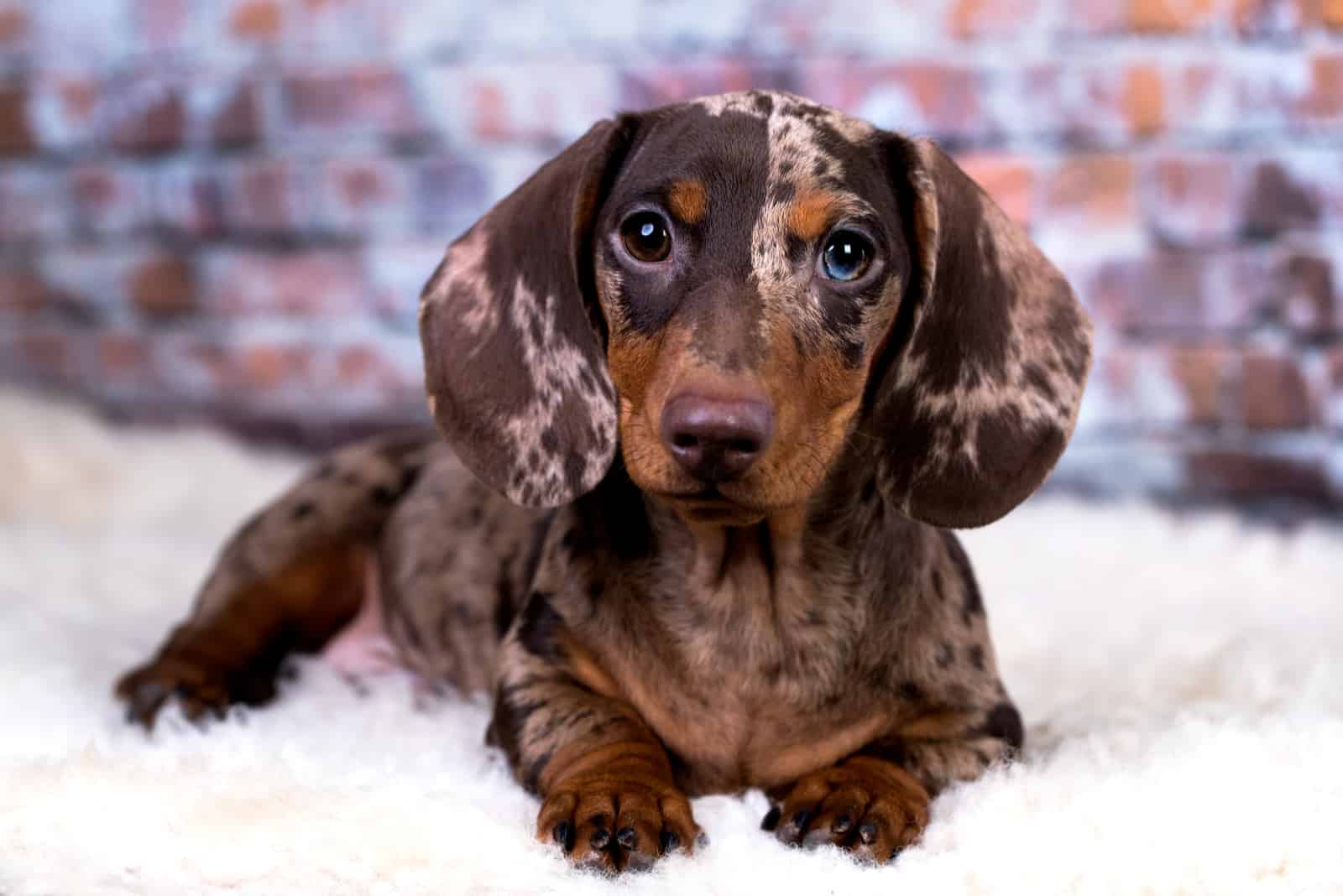
You’ve probably seen a Dapple Dachshund and thought: wow, that dog is stunning!
Yes, it truly is. But, that dog is 99% suffering from some sort of health condition. The reason behind their lovely, washed-out blue coat with black spots is the merle gene.
This gene is the main culprit for numerous severe conditions with dogs of all breeds.
Sable Coat
The sable pattern is a result of a lovely color game. It’s when a light-based coat has black tips. Some of these Dachshunds look like they fashion a black mask covering their muzzle and face. However, when you look closer, you’ll notice that it’s only a lot of black tips in one place.
This pattern has sort of a black overlay.
Double Dapple Coat Pattern
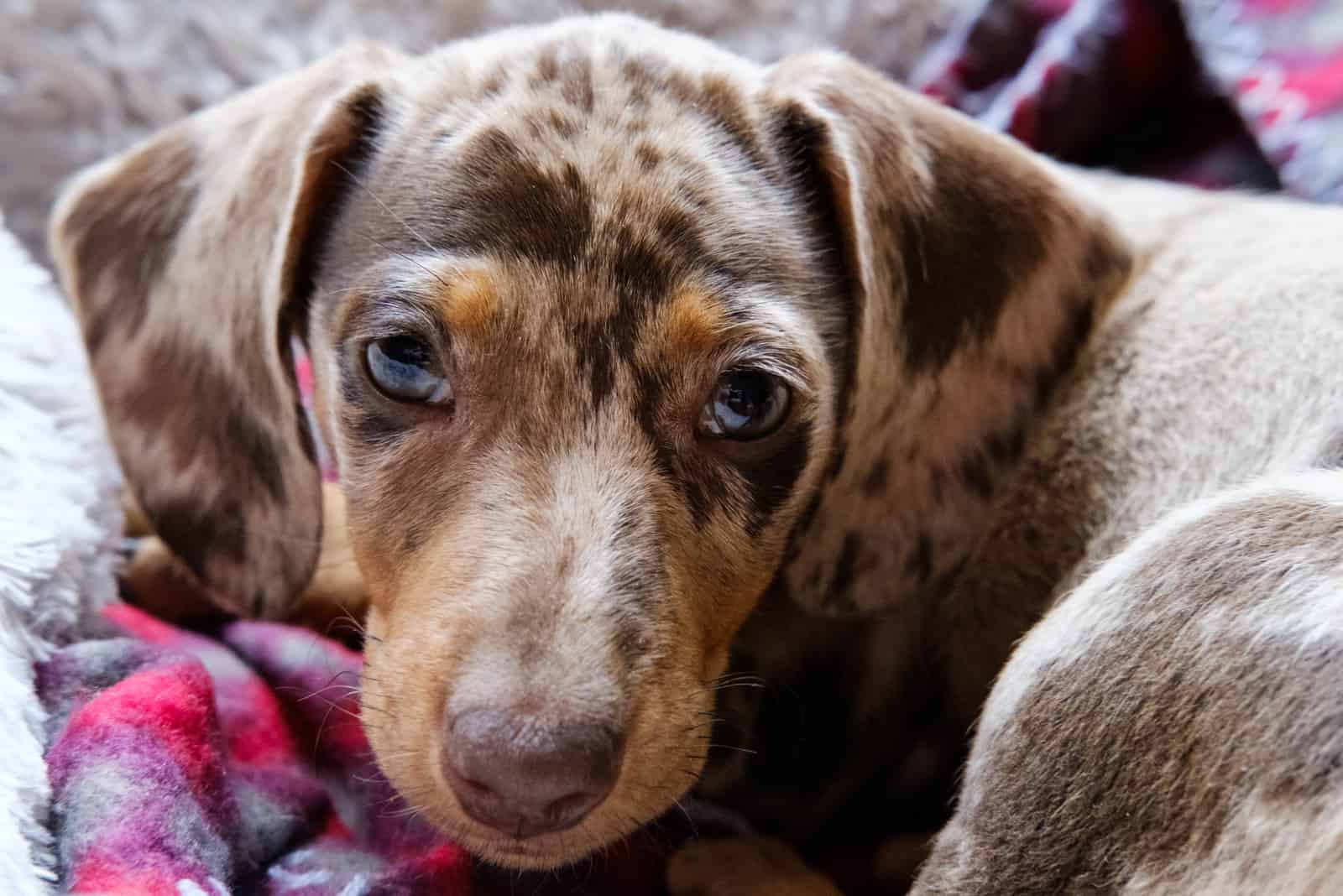
Now that you know what a dapple Dachshund is, let me introduce you to a double dapple Dachshund.
This is a result of crossing two dapple Doxies. Unfortunately, this is considered unethical. You see, breeders intentionally breed dogs with proven genetic health conditions in order to get a stunning coat shade.
I always prefer health over good looks. Now, I know double dapple Doxies are simply brilliant, and it’s hard to resist their baby-blue eyes, but think of how many problems these pups might have.
Piebald Coat
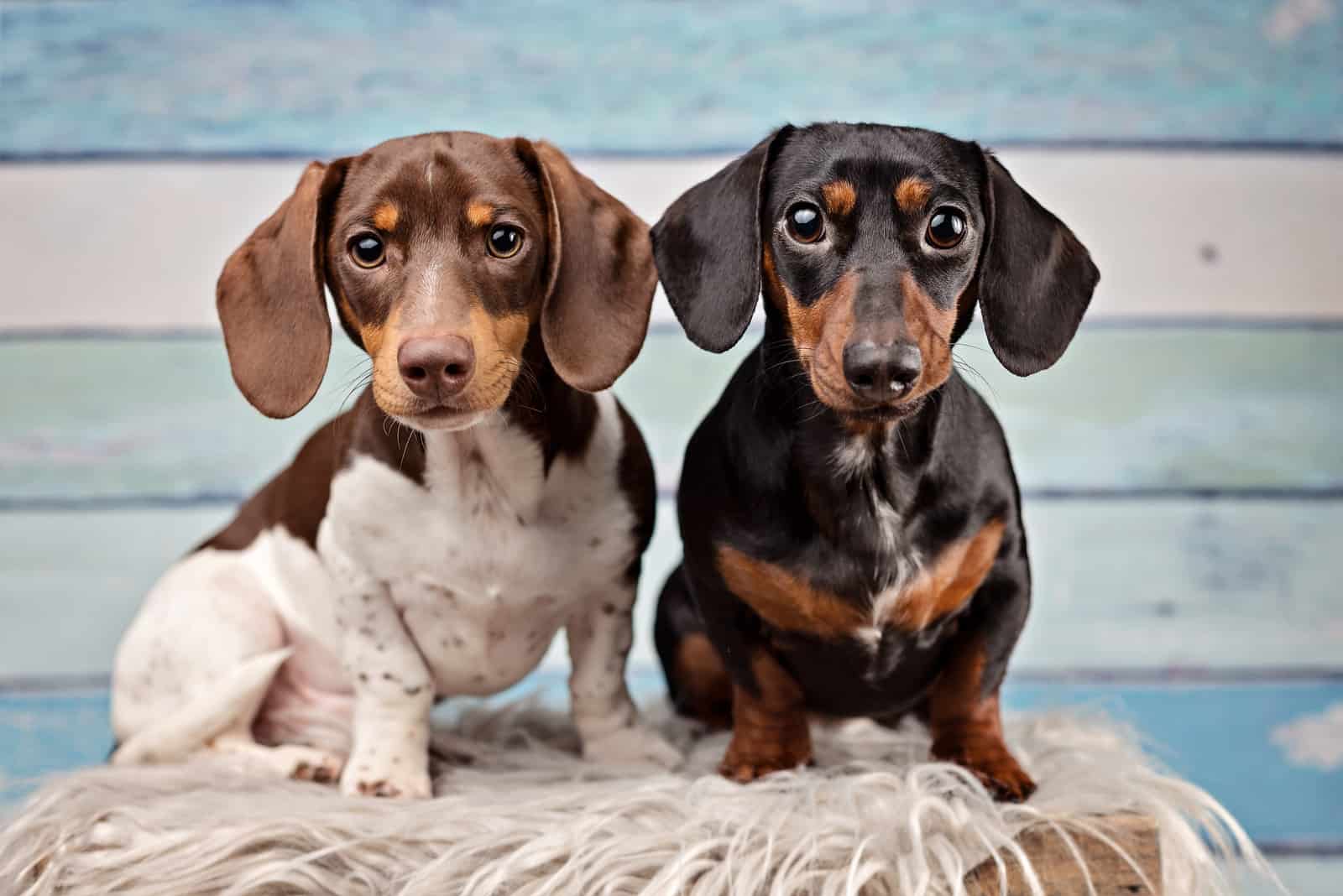
Piebald Dachshunds are what you get when recessive genes mess up the whole genetic game. These Doxies are characterized by dark spots. However, they’re not Dalmatians, and their spots don’t have to be all over their body in a pattern.
These spots are more randomly distributed, all thanks to the work of recessive genes.
Brindle Piebald Coat
The Brindle Piebald pattern is sadly not accepted by the official canine clubs. Still, they’re very much sought after.
As you can figure out yourself, these pups are a mixture of brindle Dachshunds and piebald Dachshunds. They have dark patches on a white coat.
Also, some brindle piebalds have rich-colored body parts with dark stripes.
FAQs
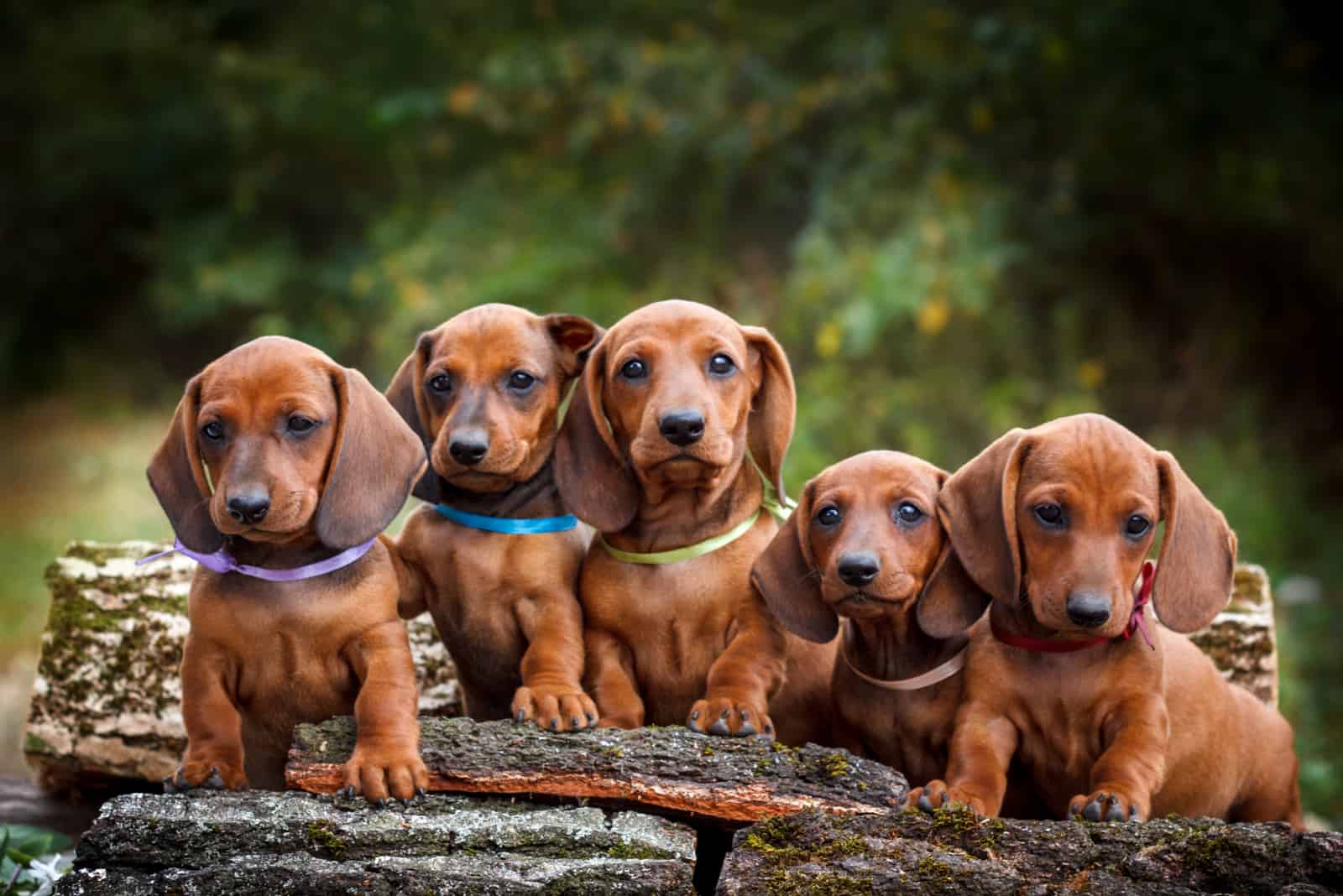
What Are The Rarest Color Options For Dachshunds?
The rarest Dachshund colors aren’t necessarily approved by the AKC or some other canine club. These are very hard to find with breeders, especially in shelters. Still, some of them are very much in demand.
The rarest colors are wild boar, solid black, Isabella, and double dapple.
What Lies Behind The Dachshunds’ Color Genetics?
Understanding a dog’s genetics can be hard. But, you don’t need a master’s degree to figure out why some dogs are completely black, and why some have patterns.
Dachshunds have two dominant pigments: eumelanin, and pheomelanin. The first pigment is responsible for a black coat or black markings. The other pigment creates a red solid color.
Now, every Dachshund has 10 pair of genes. They’re all different alleles. It’s the change in these genes that change how much of which pigment will be concentrated with each dog.
Does The Coat Color Have Something To Do With Health Issues?
Over the years, scientists have proven that a dog’s coat color has nothing to do with its behavior. So, no… a black Dachshund won’t be aggressive. Not all cream Dachshunds are sweet. There’s absolutely no correlation with color and a dog’s behavior.
But, there is a connection between a dog’s coat color and its overall health. Many of these wiener dogs have a specific coat color that carries numerous genetic diseases.
Blue and fawn or Isabella Dachshunds are truly stunning. But, their color is a result of diluted genes. These genes lead to a very common health problem called Color Dilution Alopecia (CDA).
This condition is quite hard to determine at birth. All puppies are born with a lovely coat, which will stay like this for the next six months. After this period of time, blue and fawn puppies will begin to lose their hair, it will become thinner, and their skin will dry out and become flaky.
The reason behind this change is that their hair follicles are beginning to self-destruct. New hair won’t grow on these patches, and the dog will appear to be bald. This condition can only be prevented if you pick a puppy that has been tested for CDA.
CDA is not something to be played with as it may lead to skin cancer.
The double dapple and piebald patterns have genes to thank for the following health issues: deafness, blindness, microphthalmia, and missing eyes.
Double dapple dogs carry white genes, which are responsible for many congenital diseases.
How To Groom A Dachshund
When it comes to the grooming requirements of Dachshunds, the level of complicity depends on the coat type. As you already know, Dachshunds can fashion either one of these three coat types: short-haired, long-haired, or wire-haired.
Short-haired Dachshunds are a delight to groom compared to the other two coat types. It’s proven that this coat sheds minimally. But, this doesn’t mean you shouldn’t brush or groom them regularly.
I recommend you do a weekly brushing and bathe them every two or three months. Excessive bathing isn’t good for any dog breed. For example, it may cause dry and flaky skin with short-coated Doxies.
Long- and wire-haired Dachshunds are more complicated to groom. These pups are prone to tangles and mats. If you want a Doxie with a smooth coat, you will need to brush him three to four times a week. Gentle, daily brushing is even better!
You will need a pin brush with protected tips to reach deep into its coat. These Doxies need extra care during the shedding seasons, which are usually in autumn and spring.
I don’t recommend long- or wire-haired Dachshunds if you’re too busy to clean up as they can cover your entire place in dog hair.
Conclusion: Which Is The Best Dachshund Color?
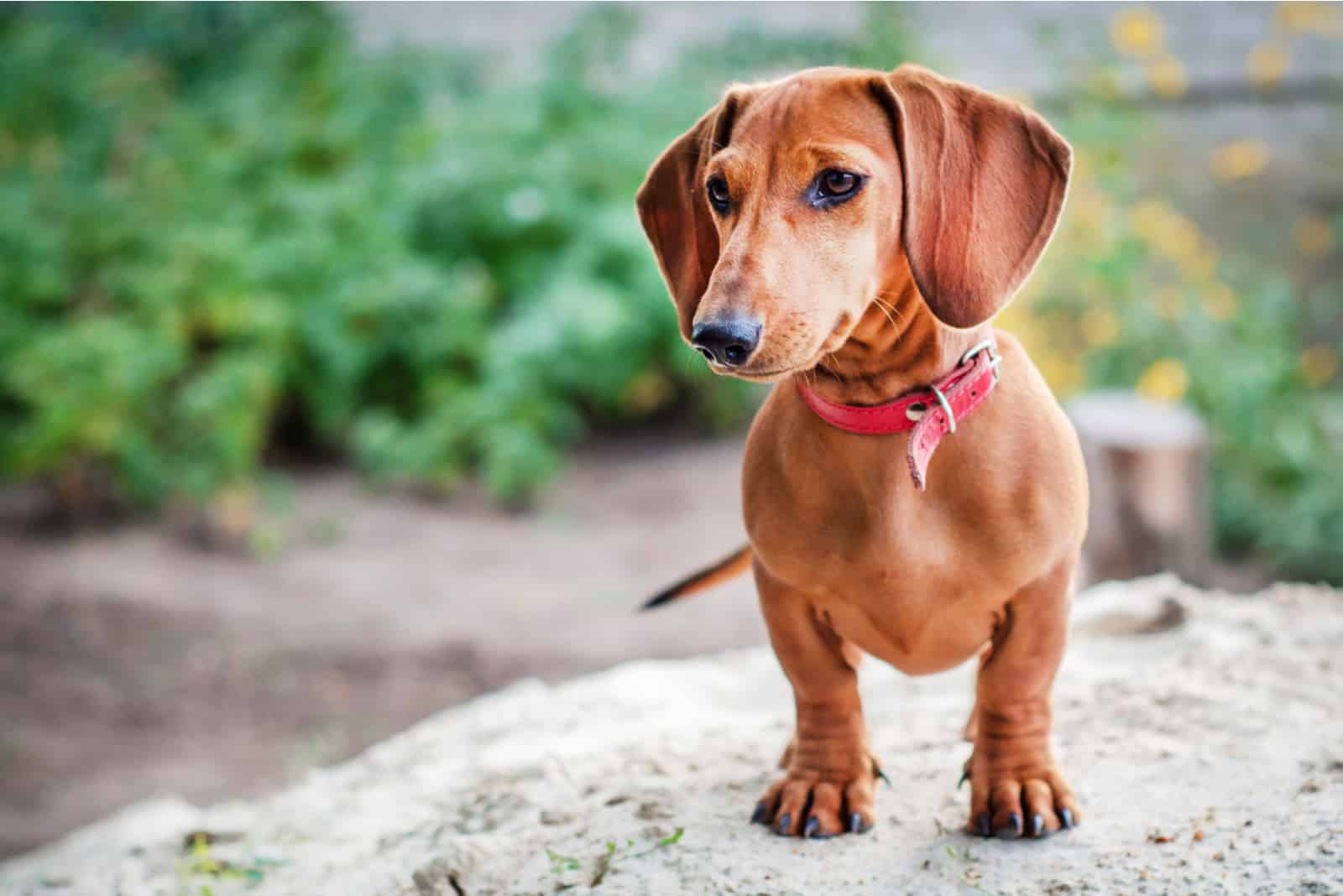
The best one of all Dachshund colors is the one you choose.
Now, I can’t tell you that this color is better than the other. All accepted coat colors are great! What I don’t recommend are colors that are a result of genetic changes and inbreeding. For example, the double dapple Dachshund will never be recommended by me.
When picking a Dachshund color, you need to listen to your heart. Choose whichever Doxie you fancy the most, but make sure you take care of its health. Ask the breeder about the puppy’s health clearances.
This is the only way you can be sure you’re getting a healthy Dachshund puppy.
A color is only a color. It’s the inside that really counts.
Read Next: Top 10 Dachshund Breeders In North Carolina You Will Love
